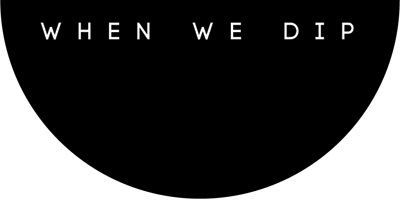One of Australia’s most talented, inspired and sought after artists, Jamie Stevens, has just made a welcome and long overdue return to Bedrock with ‘The Beneficiary EP’. Having first been introduced to the label’s fans back in 2008 via his exceptional remix of John Digweed’s ‘Warung Beach’ (BEDPPF10), Jamie also contributed the standout ‘Indigo’ to ‘Bedrock 14’ (BED14CD), and collaborated with John Digweed & Nick Muir to create ‘Prism’ for their 2013 ‘Versus’ (BEDVS01CD) project. Now, he’s back, and in the words of Mr Digweed: “Jamie Stevens is on fire right now.”
Two decades of stunning original productions, most recently for the likes of All Day I Dream, Replug, Balance Music and microCastle, alongside a mindboggling array of remix outings, gives an insight into the heart and soul of Jamie Stevens. Each masterpiece (and his unique DJ sets) journeys into the human psyche in a way that only a small number of composers and DJs within the electronic music realm can. Jamie’s unrelenting diligence, consistency, quality and refreshingly humble nature, are all key attributes that will continue to see him grow as a major contributor, and role model, to the house and techno community on a global scale far into the future. So we thought this a perfect moment to dig a little deeper and ask Jamie to share his top studio tips…
Patience:
If you’re just starting to get into production, or at least relatively new to it, and you are serious about building a career as a producer, don’t be in a rush to release what you make. Use your time to truly grow and be confident in what you make and always only ever put your best foot forward into the public sphere. Learn your tools to the point where using the tools feels intuitive. Obviously, it’s a great feeling when you finish your first handful of projects, but they’re not going to be the best you can do. You’re still learning. As with any other artist in any other field, keep going in the privacy of your own studio until you can confidently listen to your pieces and know: “this is absolutely me and my own voice”. Obviously, one never stops learning and will always be growing, but it’s important to reach a confidence after finishing a large number of projects outside of the realm of the initial learning stages.
Less is more:
Don’t fill your computer with plugins. Simply starting with your DAW’s stock plugins and learning them fully goes a long way. If you imagined each of these devices existing as real-life boxes in front of you, you’d be less likely to take them for granted. Dig deep and experiment with them. And perhaps even more importantly, read the manual. You’d be surprised what your DAW’s plugins are capable of when you’re aware of all their functions.

Making mixdowns work naturally:
When trying to improve your mixes, always look at your arrangement first. If you’re having a problem with your mix gelling, trim anything that’s unnecessary, any parts that become hidden or lost can probably be cut. This usually is best done after taking a day or two away from the project and using fresh ears and making notes on first listen. When EQing, always try to think about the frequencies you can remove as opposed to what you need to add. Mixes will sound far more natural if you cut rather than boost. Obviously, there will be many situations when you must add, but you will get a lot more clarity in your mixes when you first trim and cut back on frequencies that do not serve the part well. Try and give each part its own frequency pocket by reducing the frequencies of other parts that aren’t focused in that pocket. If you’re overdoing the EQ and you’re digging yourself into a hole, it’s time to replace that part or change the arrangement.
Avoid EQ and compression on your master bus:
Ok, so I use a limiter on my master to hear how the mix gels when approximating the loudness after mastering compression. However, I do only engage the limiter when I go for a “vibe” listen through the track (and even then only yielding around 3db of gain reduction at most). Always seek to make your mix sound great via individual channels and maybe processing sub-groups rather than on the overall mix. Pinpointing problematic areas of a mix will yield far better results than slapping EQ and extreme compression on the whole mix. Do everything you can within the mix to make it sound amazing and leave the volume to the mastering engineer.

Reference:
It’s easy to get into a sonic bubble when working on a project. Our ears and brain get used to the sound of what we’re working on and it’s difficult to objectively hear the lack of or excess lows, mids and highs. The best way to counter this is to place released music alongside your project that we know is: a) mixed well, and b) has a reasonably similar aesthetic. Mixing anomalies become extremely apparent and can be addressed quickly. Ifind the very best tool for this is Sample Magic’s Magic AB plugin. It’s placed on master bus and one of 9 reference tracks (which can be volume-adjusted individually to bring its mastered level closer to your project level) can be switched easily with a click of a button.
Buy Jamie’s new EP here






